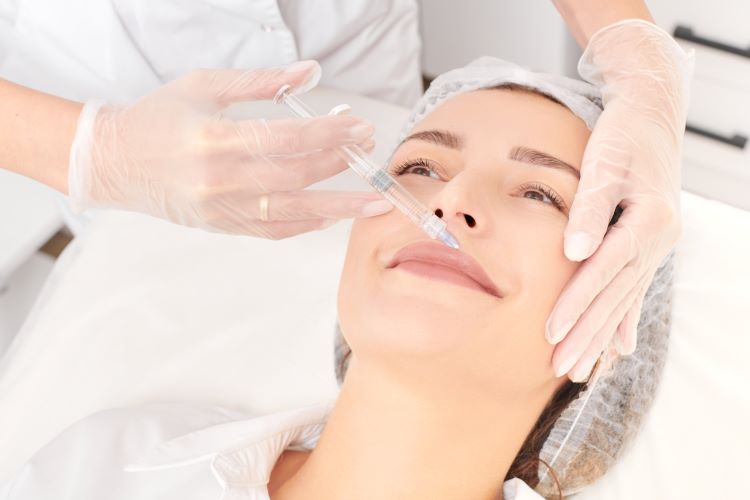The Beauty of Aging: Senior Cosmetics and Dermal Fillers
As we age, our skin undergoes various changes that can affect our appearance and self-confidence. For seniors, the world of cosmetics offers a range of options to enhance natural beauty and address common skin concerns. One popular treatment gaining traction among older adults is dermal fillers. This article explores the intersection of senior cosmetics and dermal fillers, shedding light on how these treatments can help manage the signs of aging.

For seniors, dermal fillers can be particularly effective in treating deep wrinkles, such as nasolabial folds (smile lines), marionette lines around the mouth, and hollows under the eyes. The treatment is minimally invasive and typically requires little to no downtime, making it an attractive option for older adults who want to refresh their appearance without undergoing surgery.
What are the benefits of dermal fillers for seniors?
Dermal fillers offer several benefits for seniors looking to enhance their appearance:
-
Natural-looking results: When administered by a skilled practitioner, dermal fillers can provide subtle, natural-looking improvements that enhance one’s features without appearing overdone.
-
Immediate effects: Unlike some cosmetic treatments that require weeks or months to show results, dermal fillers offer immediate visible improvements.
-
Customizable treatment: Dermal fillers can be tailored to address specific concerns and areas of the face, allowing for a personalized approach to facial rejuvenation.
-
Boost in confidence: By addressing visible signs of aging, dermal fillers can help seniors feel more confident and positive about their appearance.
-
Non-surgical option: For seniors who may not be suitable candidates for surgical procedures, dermal fillers provide a less invasive alternative for facial rejuvenation.
Are dermal fillers safe for older adults?
While dermal fillers are generally considered safe for adults of all ages, seniors should take certain precautions and consult with a qualified healthcare professional before undergoing treatment. It’s essential to disclose any medical conditions, medications, or allergies to ensure the treatment is suitable and safe.
Most dermal fillers used today are made from hyaluronic acid, a substance naturally found in the body. This reduces the risk of allergic reactions and makes the treatment well-tolerated by most individuals. However, as with any cosmetic procedure, there are potential risks and side effects, such as bruising, swelling, or infection, which should be discussed with a healthcare provider.
Seniors with certain medical conditions, such as bleeding disorders or autoimmune diseases, may not be suitable candidates for dermal fillers. It’s crucial to have a thorough consultation with a qualified practitioner to determine if the treatment is appropriate and safe based on individual health circumstances.
What other cosmetic options are available for seniors?
While dermal fillers are a popular choice, there are various other cosmetic options available for seniors looking to enhance their appearance:
-
Topical treatments: High-quality skincare products containing ingredients like retinoids, peptides, and antioxidants can help improve skin texture and reduce the appearance of fine lines.
-
Chemical peels: These treatments can help improve skin tone, texture, and reduce the appearance of age spots and sun damage.
-
Laser treatments: Various laser therapies can target specific skin concerns, such as wrinkles, pigmentation, or skin laxity.
-
Botox: This injectable treatment can help smooth out dynamic wrinkles caused by repetitive facial movements.
-
Microneedling: This procedure stimulates collagen production, improving skin texture and reducing the appearance of fine lines and wrinkles.
How to choose the right cosmetic treatment for aging skin?
Selecting the most appropriate cosmetic treatment for aging skin involves several considerations:
-
Assess your specific concerns: Identify the areas of your face or skin that you’d like to improve, such as wrinkles, volume loss, or skin texture.
-
Consult with a professional: Schedule consultations with qualified dermatologists or cosmetic surgeons to discuss your goals and receive personalized recommendations.
-
Consider your health: Ensure that any chosen treatment is safe and suitable for your overall health and any existing medical conditions.
-
Evaluate the cost and maintenance: Some treatments may require ongoing maintenance, so consider both the initial and long-term costs.
-
Start with less invasive options: If you’re new to cosmetic treatments, consider starting with less invasive options before progressing to more advanced procedures.
-
Research and ask questions: Learn about different treatment options, their potential risks, and expected outcomes to make an informed decision.
| Treatment | Provider Type | Estimated Cost Range | Key Benefits |
|---|---|---|---|
| Dermal Fillers | Dermatologist, Plastic Surgeon | $600 - $2,000 per syringe | Immediate results, customizable |
| Botox | Dermatologist, Plastic Surgeon | $300 - $800 per area | Reduces dynamic wrinkles |
| Chemical Peel | Dermatologist, Esthetician | $150 - $600 per session | Improves skin texture and tone |
| Microneedling | Dermatologist, Esthetician | $200 - $700 per session | Stimulates collagen production |
| Laser Treatment | Dermatologist, Plastic Surgeon | $1,000 - $3,000 per session | Targets specific skin concerns |
Prices, rates, or cost estimates mentioned in this article are based on the latest available information but may change over time. Independent research is advised before making financial decisions.
The world of senior cosmetics offers a wide array of options for those looking to enhance their natural beauty and address the signs of aging. From dermal fillers to topical treatments, there are solutions available to suit various preferences, budgets, and skin concerns. By understanding the available options and consulting with qualified professionals, seniors can make informed decisions about cosmetic treatments that align with their personal goals and overall well-being.






